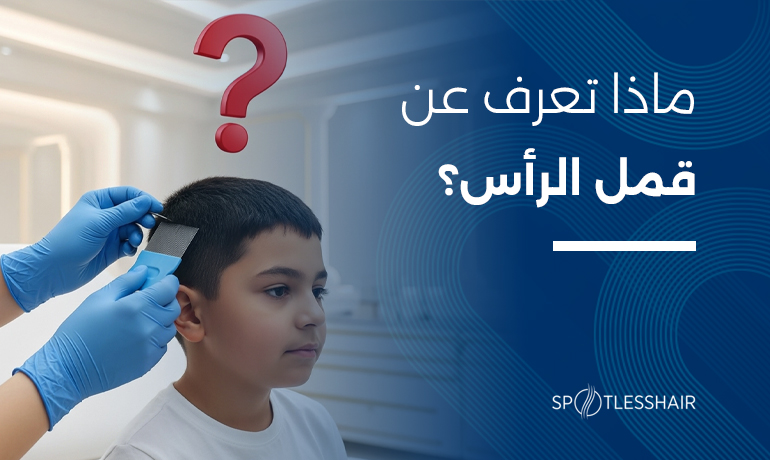Head lice are tiny, wingless insects that feed on human blood and cause scalp itching and irritation. They’re most common in children and prefer darker areas like the nape of the neck and behind the ears. It can take 2–3 weeks after exposure for signs to appear. The most common transmission route is direct head-to-head contact, though sharing items such as combs, brushes, hats, towels, pillows, or clothing can also spread lice.
Life cycle of lice
- Nits (eggs): Very small and easy to miss
- Nymphs: Hatch from the eggs and start feeding on blood
- Adults: About the size of a sesame seed, whitish-gray; may live up to 30 days on the scalp, with females laying hundreds of eggs in their lifetime
Lice can cause intense itching and a stinging or warming sensation due to substances secreted from their mouthparts while feeding.
⸻
Signs and symptoms
- Persistent itching of the scalp
- Nits (tiny yellowish dots) firmly attached to hair shafts
- Headaches from allergic reactions to louse saliva
- Scratches or sores that can lead to secondary bacterial infections (boils or pustules)
- Redness around hairline areas (behind ears, cheeks, around the eyes) due to constant scratching
- Occasional fever as the immune system reacts
Some children may also experience general discomfort, rash, or emotional distress. While most common in kids and teens, lice can affect any age group.
⸻
Finding nits (eggs)
Nits are oval with a thin, transparent shell and often look like dandruff—so they’re easy to overlook. Even a single untreated egg can restart an infestation over time. Nymphs are visible to the naked eye and resemble small, translucent adult lice. The most reliable way to confirm infestation is a close scalp exam under bright light, ideally with a magnifier.
⸻
Removing head lice
The most effective at-home removal method is systematic wet-combing with a purpose-built fine-tooth comb (available from Spotless Hair). Because this process can be long and tiring for families, visiting a Spotless Hair center is the easiest path to a definitive, one-session solution.
⸻
Preventing reinfestation
- If your child had direct contact with an infested person, inform caregivers such as the school nurse, teacher, and bus staff
- Teach children not to share combs, hats, or towels
- Schedule regular head checks, especially during the school year
📞 Spotless Hair (bookings and inquiries): 920035512
🌐 More info: www.she.sa


No Comments